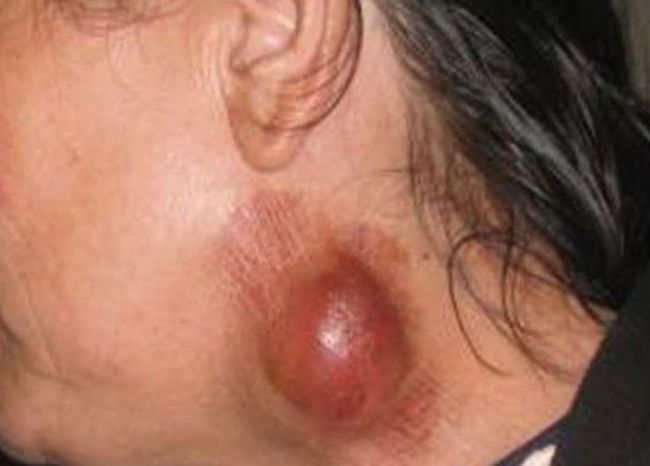Infectious diseases in the world presents a huge number of different diseases. Among them, there are so-called small plague or tularemia. This pathology is one of acute bacterial infections, but quite rare. In spite of this, tularemia contamination occurs in one hundred percent of the contact provided with the pathogen.
For the first time the disease learned about at the beginning of the twentieth century. At that time, two scientists from America found patients rabbits. They carefully examined the animals and soon realized, What impressed them the disease was not the plague, and tularemia. They identified the pathogen 1911 year.

About ten years later the same discovery was made and another scientist, and completely independently. Gradually, almost every country has been deduced the pathogen of tularemia.
The causes of the disease
In Russian cities tularemia disease manifests itself in waves. At the beginning of this century in the year may have been infected only sixty people, but soon this number had risen to hundreds, and then to five hundred. The causative agent is the same stick out of aerobic bacteria, under the name of Francisella tularensis.
Features bacteria:
- It is among the very survivable organisms.
- Able to live for a month in water, the temperature of which does not exceed four degrees.
- The grain or straw to survive for six months.
- Provided temperature at about 25-30 degrees, life span is twenty days.
- Month bacterium is able to survive in the skin of dead animals from tularemia, if the temperature is approximately 7-12 degrees.
- Too high temperatures and disinfectants kill microorganisms like.
More often than not, you can catch a variety of animals. As used rodent pathogens reservoir, birds and some mammals, including rabbits and the like, as well as sheep and even dogs. The most common cause of infection are still rodents, namely, voles and muskrats. In these organisms are taking a bite of ticks.
note. A person can not catch tularemia from another person.
There is another type of transmission. He called respiratory. The disease is able to start due to the, that a person will breathe dust, appeared from grain or straw, in which bacteria. Generally, Infection usually occurs only if there were foci of tularemia, but there is another option - to transfer the parasite to another location together with the contaminated products.

Kinds and features of disease pathogens
In microbiology pathology pathogens are classified depending on, where they have led to the beginning of the disease. It is believed, that is stronger than all the body hits the US or Nearctic type. There are two more options - Holarctic, otherwise called the Asia-Europe, as well as the Central Asian.
Be particularly careful to monitor their health is necessary for people, at risk. These include, Firstly, they, who deal with animals, as well as residents of areas with frequently encountered tularemia.
In terms of professions, at risk are:
- hunters,
- anglers,
- employees of slaughterhouses.
From the viewpoint of spread, encounter with the disease, in theory, It can be anywhere. For the reason that, that infection occurs in one hundred percent of the cases, irrelevant, what sex a person, what his race, and how old is he.
Depending on, how someone infected, there are four main ways to transfer:
- Contact,
- Transmissible,
- alimentary,
- Airborne dust.
A first embodiment involves direct contact with the animal-reservoir, the second - the bite of insect vectors, third - the consumption of contaminated food or fluid, and, finally, grain dust inhalation.

The onset of the disease
The pathogen can take advantage of a variety of bodies to, to penetrate into the human body. Among them, the skin, eyes, respiratory and gastrointestinal systems. Most often the first thing they affect the lymph nodes and only then propagate further. Because of the human body attempts to fight off infection, release toxin bacteria, significantly worsens the condition of person infected.
The incubation period for tularemia is very of variability. Often the symptoms begin to appear after a few hours, and sometimes it is preceded by almost a month. but, average - for about a week, 3-7 days. the, the rate at which there are signs of tularemia, generally it depends on the amount of the pathogen, taken into the body, as well as its type and strength of the human immune system.
Onset of the disease is characterized by virtually any infectious process. Among the first symptoms of tularemia are:
- Chills,
- Heat, up to forty degrees,
- Strong and sharp headache,
- sense of aches in the joints,
- Pain in the muscles,
- Dizziness.
From the standpoint of external manifestations, the patient may notice skin redness, sometimes a rash and swelling of the face. Thus there is an increase in vascular, which is why they can be clearly seen in the eyes. The oral cavity is sometimes observed hemorrhage, a plaque appears in the language. For tularemia sticks tend primarily affects the lymph nodes, there is an increase in their.

disease symptoms
The temperature in patients with tularemia may be temporarily reduced, or may be supported on an ongoing basis. Most often it is the waves, about three times, it takes about three weeks, but possibly for a long period, up to three months.
Characteristic features of the disease is gradual decrease of lymph nodes and reduction of their pain, while buboes disappear, forming abscesses, because of which on the skin formed fistulas.
Bubonic form of tularemia usually develops in the case, if pathogens get inside with food or water. In this scenario, you experience the following symptoms:
- Difficulty swallowing,
- Hyperemia,
- Sore throat,
- parotid, submandibular and cervical lymph nodes,
- the swelling of the tonsils, the appearance of these necrotic plaque,
- Development of ulcers and scars.
If the disease has affected the gastrointestinal tract, Tularemia is an infection will manifest itself with pain in the abdomen. Sometimes people feel sick, have diarrhea, possible vomiting, and anorexia development. In this case, the pain is concentrated in approximately the navel, and the spleen and liver increased in size.
Another option - pneumonic form of the disease. She appears in the event, if a person inhaled pathogens dust. This species is divided into bronhitichesky and pneumonic.
Symptoms of this first:
- Dry cough,
- Not too much pain behind the breastbone,
- Mild general intoxication.
Usually, people recover after about two weeks after the onset of type bronhiticheskogo. If there is a pneumonic, and the symptoms of tularemia will respective pneumonia. Often when this is accompanied by various complications during, like the appearance of abscesses. In particularly serious cases can even pulmonary gangrene.

Diagnostics
Diagnosis of tularemia depends largely on the completeness of the collected history. The doctor will need to know about contact with animals, campaigns against hunting or fishing, possible insect bites.
After that, turn to the following methods::
- Bacteriological. Taken from puncture bubo, ulcers, blood or other sources, whichever, how the disease manifested itself. The obtained sample was administered to laboratory mice, who after the death of swabs are taken and examined under a microscope.
- Serological. Considered to be much more humane. RA is applied and PHA.
- Skin-allergy test. It refers to the number of ways, allowing to quickly identify disease. The patient is given an injection, reaction that manifests itself after about four days. but, a positive result will be not only in patients, but those, who has had the vaccine against tularemia, as well as in recently been ill.
- Non-specific techniques. Infected take a variety of tests, such as blood and urine, examining them for intoxication.
There is also the IFA. Immuno-fluorescence analysis will only work about a week after the onset of the disease. PCR remains more, which is among the methods, allowing to diagnose the disease in its early stages.

Treatment and prevention of tularemia
Tularemia is a serious disease, being treated in a hospital. For this purpose, antibiotics, like Streptomycin and gentomitsina, which inject into the muscle. If they do not work, then turning to drugs like rifampicin and chloramphenicol. They are members of the third generation cephalosporins.
The clinic on tularemia also affected in terms of symptoms. Doctors reduce intoxication, being prescribed by means of heat and inflammation. Sometimes also used vitamins, antihistamines. From time to time we have to be lanced and drained buboes.
Prevention Tularemia is in compliance with hygiene standards, especially in enterprises. The vaccine is used only in case of occurrence of foci of infection in specific areas. Immunity persists for about the past five years, sometimes seven. After that, the vaccine is generally administered repeatedly.












